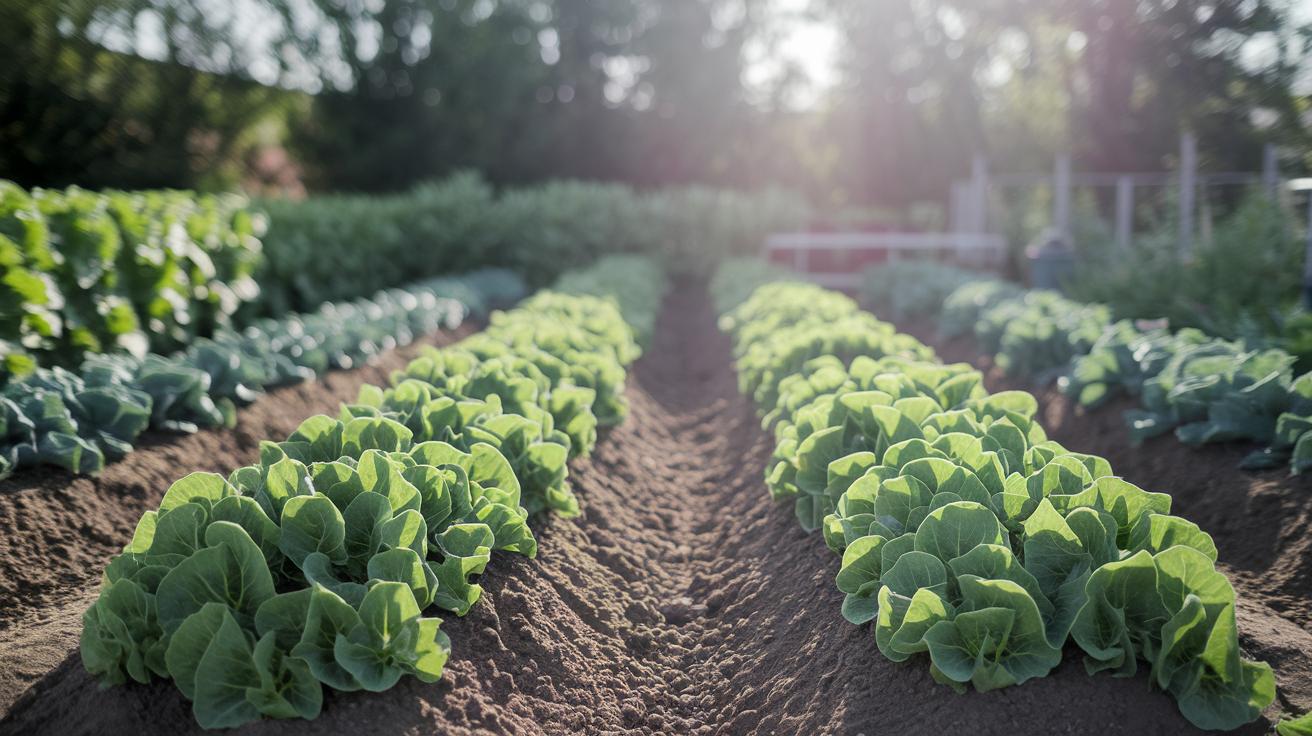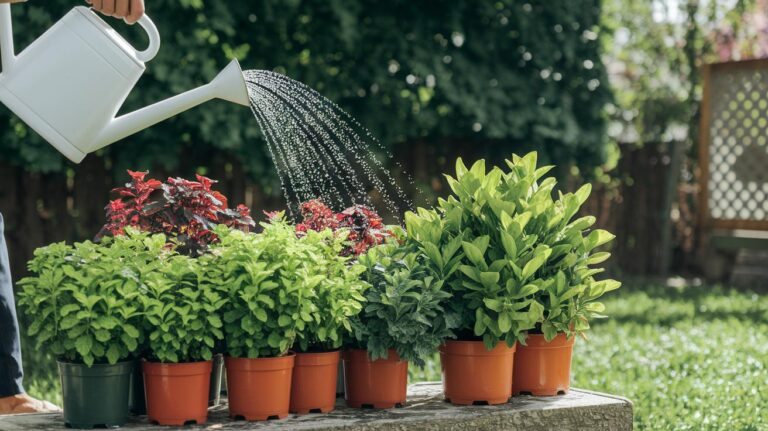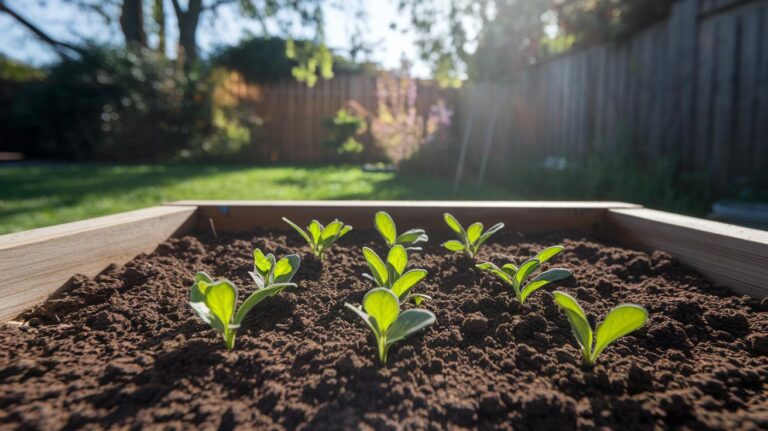Best Heirloom Vegetables For Small Organic Gardens Bountiful
Ever think your balcony or window box (a shallow planter on your ledge) can’t grow sweet cherry tomatoes and crunchy carrots? I thought the same, um, until I pinched a buttercrunch lettuce leaf. Then I felt the warm earth crumbling between my fingers.
These heritage vegetables (old plant varieties saved over time) shrug off leaf spots and wilting. They pack a bold taste without any chemicals. You just tuck them into pots, a small raised bed (a low frame you fill with soil), or even a sunny window trough.
My cat loves napping next to it by the way. But back to plants: this guide shows you how many days until harvest, how much space you need, and what each veggie tastes like. You’ll see how your little garden can overflow with fresh, tasty treats.
Top Heirloom Vegetables for Small Organic Gardens
Ever wonder which heirloom (a heritage veggie passed down through generations) plants can really rock a small garden? I’ve lined up favorites that burst with flavor in tiny spots. They shrug off common leaf spots and wilt, and they taste amazing without any chemicals.
Have you ever felt the warm soil crumble between your fingers? That’s the feeling these plants love. You can tuck them into pots, a raised bed (a framed box filled with soil) or even a window trough. By the way, my cat loves sunning on the edge of mine.
This quick guide shows you days to harvest, growing style (container size or row space), and the flavor treat you’ll bite into. Ready to turn your little patch into a tasty hotspot? Yes!
| Variety | Days to Maturity | Space & Habit | Flavor Profile |
|---|---|---|---|
| Tiny Tim Tomato | 50-60 | 1 to 3 gallon pot, dwarf plant | Sweet little bursts like sun-warmed cherries |
| Provider Bush Bean | 50-60 | 12 inch row, bushy plant | Earthy and tender, like spring peas |
| Buttercrunch Lettuce | 30-45 | 6 to 8 inch spacing, loose head | Buttery leaves with a crisp snap |
| Scarlet Nantes Carrot | 60-70 | 12 inch deep raised bed | Sweet crunch with a bright orange hue |
| Jimmy Nardello Pepper | 70-80 | 5 to 7 gallon container | Fruity pepper with a gentle heat |
| Lemon Cucumber | 50-60 | Treillage or pot, vining plant | Juicy and bright, like a cool sip on a hot day |
| Bush Slicer Cucumber | 50-60 | 4 to 6 inch spacing, compact vine | Classic crisp crunch |
| Bloomsdale Spinach | 40-50 | 4 to 6 inch spacing, shade-friendly | Tender, earthy leaves |
Soil Preparation for Small Organic Raised Beds

Think of your raised bed soil like a sponge. It needs to soak up water, drain the extra, and feed your plant roots. First, test your soil pH (a measure of how acidic or basic it is). You’re aiming for a 6.0 to 7.0 range so nutrients are easy for plants to grab. If it’s under 6.0, sprinkle in powdered garden lime. If it’s above 7.0, add a bit of elemental sulfur.
Next, give your soil a boost with compost (decayed organic matter that enriches soil). I mix in about one wheelbarrow of mature compost for every three beds, that’s roughly 25 to 30 percent of your mix. It turns the soil light and fluffy and invites worms and microbes to make themselves at home.
Now let’s lock in moisture and keep hungry weeds at bay. Spread 2 to 3 inches of organic mulch, straw, shredded bark, or fallen leaves all work. The mulch looks neat, holds in rain, and slows thirsty weeds during hot afternoons.
By the way, have you ever felt the cool shade under a leaf blanket? It’s like a little spa for seedlings. Back to prepping your soil…
Finally, check how deep your bed really is. Carrots and Bloomsdale spinach need at least 12 inches of loose soil to grow straight, sweet roots. If you’re using containers, pick ones at least a foot deep. With balanced pH, plenty of compost, and a cozy mulch coat, your compact heirloom veggies will thank you with a bumper harvest.
Companion Planting Strategies with Heirloom Vegetables
Want more from your little veggie patch? Pairing herbs and flowers with veggies works wonders. When plants share a bed with good neighbors, they chase off pests (bugs that harm plants), save nutrients, and even taste better. Have you ever sniffed basil next to a warm tomato? It’s like a burst of summer in the garden.
By the way, my cat loves sunning on my raised beds. Back to your garden…
-
Pair tomatoes with basil to chase away tomato hornworms (those big green caterpillars that chew leaves). Plus, basil’s sweet, herby scent seems to coax out a richer tomato flavor. Yum.
-
Plant bush beans beside corn. The beans tuck nitrogen (a plant nutrient) back into the soil. That keeps your tall corn stalks happy without fake fertilizer, and your beds stay balanced.
-
Nestle bright marigolds, peppery nasturtiums, and fuzzy borage around your rows. These flower friends lure hoverflies and ladybugs, beneficial bugs that munch on aphids (tiny sap-sucking insects). Goodbye harsh sprays, hello more blooms.
-
Sprinkle dill, cilantro, or chives near cabbage or carrots. Their savory scent confuses hungry caterpillars, so your roots stay crisp and tasty.
-
Edge your garden with sweet alyssum groundcover. Its tiny white blossoms carpet the soil and beckon bees and other pollinators (insects that help fruits set). That buzz means bigger harvests on peppers and beans.
Planting these combos now sets you up for a summer harvest.
Pest Management in Compact Organic Gardens

Let’s keep flea beetles and cabbage worms off your plants. Drape fine netting like a little tent over your seedlings and pin the edges tight. It still lets sunlight and fresh air through. No more biting bugs sneaking in.
I like spraying neem oil or insecticidal soap each week. Think of it as a gentle soap bath that drowns soft bugs on contact and breaks their life cycle. Have you ever sniffed neem oil? It smells earthy and warm.
Try homemade garlic-pepper spray for a natural punch. Smash one garlic bulb, stir in a teaspoon of chili powder, then add a quart of water and let it steep overnight. Strain in the morning and mist your leaves. The strong scent sends caterpillars packing.
Want a living pesticide? Invite ladybugs and lacewings into your beds. These tiny hunters love to feast on aphids so you can skip harsh chemicals. Just turn their container upside down near the trouble spots and watch them roll out.
Slug problems? Beer traps to the rescue. Bury a shallow jar so its rim sits even with the soil, then fill it halfway with beer. Slugs crawl in and can’t escape. Check each morning, you’ll be surprised at your slimy catch.
Flip leaves over every few days and peek underneath. Early spotting means you fix little problems before they become big headaches. Easy peasy.
Space-Saving Gardening Techniques for Heirloom Varieties
Your backyard feeling like a postage stamp? Try growing up instead of out. A trellis (a frame for climbing plants) or a teepee setup turns empty air into a green wall you can snack on. Imagine those juicy Lemon cucumbers weaving through twine overhead, ready for a picnic slice anytime.
For heavy feeders, plants that need lots of nutrients, like tomatoes, peppers, and eggplants, grab pots that hold 10 to 15 gallons of soil (around 15 inches wide and deep). That much room lets roots spread out and keeps soil from drying too fast. Your Tiny Tim tomatoes will stay perky, not wilting in the midday sun. Don’t forget to fine-tune moisture, check container garden watering tips for quick tricks.
- Build an A-frame (a simple ladder-like trellis) or a teepee trellis (three poles tied at the top). This gives cucumbers and beans a free pass to climb into the sky.
- Pick pots that hold 10 to 15 gallons (about 15 inches wide and deep). Heavy feeders like tomatoes and eggplants need the extra space for happy roots.
- Tuck shallow-rooted lettuce and Bloomsdale spinach (a curly-leaf spinach) around taller peppers. They’ll cozy up together in the same pots.
- Sow new seeds every two to three weeks. Fresh greens will pop up in gaps as big plants wrap up their season.
- Rotate your trellis or flip the A-frame each month. That way, every side soaks up even sunlight.
Mix these tricks and watch your tiny patch come alive. Layer up, tuck in, then shift spots like puzzle pieces. Soon you’ll be harvesting heirloom treasures from your own buzzing veggie corner.
Harvesting and Succession Planting in Small Organic Plots

Imagine nibbling on crisp, homegrown veggies all season. Succession planting (sowing seeds at regular intervals) and gentle harvesting make this possible, even in a tiny organic patch. Let’s walk through easy steps you can start today.
Have you ever felt the soft snap of fresh lettuce between your teeth? Here’s how to keep that snack bar going:
- Pick the outer leaves of lettuce and spinach once they reach about 4 to 6 inches. Doing this lets the inner leaves keep growing back for more salads.
- Sow carrot and radish seeds every two weeks. Staggered planting gives you steady waves of crunchy roots without overwhelming your small plot.
- Plan a fall sowing of Bloomsdale spinach and Buttercrunch lettuce for cool-weather salads when temperatures drop.
- Rotate crops (moving different plants each season) to prevent soil diseases. Try beans in one bed, tomatoes in the next, then spinach, it keeps your soil happy.
- Keep a simple planting calendar taped inside your shed. Jot down when you sow, thin, and harvest to catch every growing window.
Oh, and by the way, my neighbor’s cat loves sunning on the raised bed while I’m working. Back to prepping your plot, planting now sets you up for summer harvest.
With these tips, your little garden will buzz with life, the soil will stay rich, and your kitchen will overflow with fresh organic goodness.
Final Words
We jumped right into top heirloom veggies that shine in tight spots. Next, we built raised beds with rich, well-draining soil.
Then we paired plants to guard against bugs and lure pollinators. After that, we tackled pests with natural sprays and row covers.
We gave space-saving tips like trellises and intercropping, and wrapped up with harvesting secrets and succession sowing for nonstop yields.
Now grab your trowel and let’s harvest those best heirloom vegetables for small organic gardens with a smile.
FAQ
What heirloom vegetables work best in small organic gardens?
The heirloom veggies that work best in a small organic garden include Tiny Tim tomato, Provider bush bean, Buttercrunch lettuce, Scarlet Nantes carrot, Jimmy Nardello pepper, Lemon cucumber, Bush Slicer, and Bloomsdale spinach—all yield well in tight spaces.
How do I prepare soil for small organic raised beds?
Preparing soil for small raised beds means aiming pH 6.0–7.0, mixing in 25–30% mature compost, making beds at least 12 inches deep, and topping with 2–3 inches of straw or bark mulch to hold moisture and block weeds.
Which companion planting strategies help heirloom veggies thrive?
Companion planting helps heirloom veggies thrive by pairing tomatoes with basil, bush beans with corn for natural nitrogen, adding marigolds, nasturtiums or borage to attract predator insects, and planting dill or cilantro near cabbage to ward off aphids.
How can I manage pests organically in a compact garden?
Managing pests organically in a compact garden means using row covers, neem oil or soap sprays, homemade garlic–pepper spray, inviting ladybugs, setting beer traps for slugs, and checking leaves weekly to spot problems early.
What space-saving techniques suit heirloom varieties in small plots?
Space-saving techniques suit heirloom varieties by using A-frame or teepee trellises for cucumbers and beans, 10–15 gallon pots for peppers and tomatoes, intercropping shallow lettuce around deeper-rooted peppers, and succession planting every 2–3 weeks.
How do I harvest and succession plant in a compact organic plot?
Harvesting and succession planting in a compact plot means picking lettuce outer leaves at 4–6 inches, sowing carrot or radish seeds every two weeks, planting cool-season greens for fall, and rotating crops each year to keep soil healthy.







